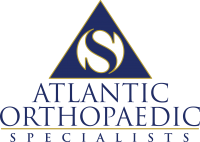Spinal Stenosis
What Is Spinal Stenosis?
Spinal Stenosis is a narrowing of the spinal canal or the foramen, the opening through which nerve roots pass. Stenosis can develop in any area of the spine.
Degenerative changes in the spine, a collapsed disc, bone spurs, or cysts can cause the spinal canal to narrow. This narrowing places pressure on the nerve roots and/or spinal cord, often resulting in pain.
What Causes Spinal Stenosis?
- Overgrowth of bone. Wear and tear damage from osteoarthritis on your spinal bones can prompt the formation of bone spurs, which can grow into the spinal canal. Paget’s disease, a bone disease that usually affects adults, also can cause bone overgrowth in the spine.
- Herniated disks. The soft cushions that act as shock absorbers between your vertebrae tend to dry out with age. Cracks in a disk’s exterior may allow some of the soft inner material to escape and press on the spinal cord or nerves.
- Thickened ligaments. The tough cords that help hold the bones of your spine together can become stiff and thickened over time. These thickened ligaments can bulge into the spinal canal.
- Tumors. Abnormal growths can form inside the spinal cord, within the membranes that cover the spinal cord or in the space between the spinal cord and vertebrae. These are uncommon and identifiable on spine imaging with an MRI or CT.
- Spinal injuries. Car accidents and other trauma can cause dislocations or fractures of one or more vertebrae. Displaced bone from a spinal fracture may damage the contents of the spinal canal. Swelling of nearby tissue immediately after back surgery also can put pressure on the spinal cord or nerves.
What Are The Symptoms of Spinal Stenosis?
- Stiffness in neck
- Weakness in arms causing difficulty using the hands
- Pain and Numbness in hands and/or arms
- Lumbar
- Tired, heavy feeling in back, buttocks, and legs while walking or standing
- Cramping sensation in these areas
- Decreased walking due to weakness, numbness or pain in legs
- Causes
Cervical
- Arthritic changes in neck
- Bone spurs push on nerves and spinal cord
- Compression can be caused by large disc herniations
- Lumbar
Degenerative changes limit nerve space; lack of blood supply induces symptoms.
What Are The Treatment Options For Spinal Stenosis?
Nonsurgical Treatment
- Medications
- Physical therapy or spinal cortisone injections are indicated for pain relief.
Surgical Treatment
Surgery can be considered for those who do not improve.
Cervical Laminectomy
Spinous process and lamina are removed to decrease pressure on spinal cord. Instrumentation can be used to ensure stability.
Lumbar Decompression
This procedure involves removing all or portions of the lamina, removing bone spurs and/or enlarging foramen to relieve pressure or compression on the nerve roots or spinal cord. This pressure often is the cause of the pain.
Decompression & Posterolateral Fusion
Often times, in addition to a decompression, your surgeon will perform an instrumented posterolateral fusion by inserting a series of screws and rods coupled with the placement of a bone graft. This fusion provides increased spinal stability.
Anterior Lumbar Interbody Fusion (ALIF)
The surgical approach is from the front of the abdomen. Once the exposure is made, surgical instruments are used to remove the disc material causing the nerve compression. Once this material is removed, an interbody cage or bone spacer is placed at the disc site filled with bone graft. The vertebral bodies above and below are frequently put under compression to aid in the subsequent spinal fusion.
Posterior Transforaminal Interbody Fusion
The same procedure as the ALIF but the approach and exposure are performed from the back. Just as in an ALIF, the disc material is removed and an interbody device is inserted.
Compression through the use of pedicle screws is frequently achieved to aid in fusion.
Our team is here for you
We offer the best, least invasive and least aggressive options to relieve your pain and symptoms so you can get back to the life you love. Atlantic Orthopaedic Specialists Spine and Scoliosis Care Center has convenient locations in Virginia Beach, Norfolk and Chesapeake.




